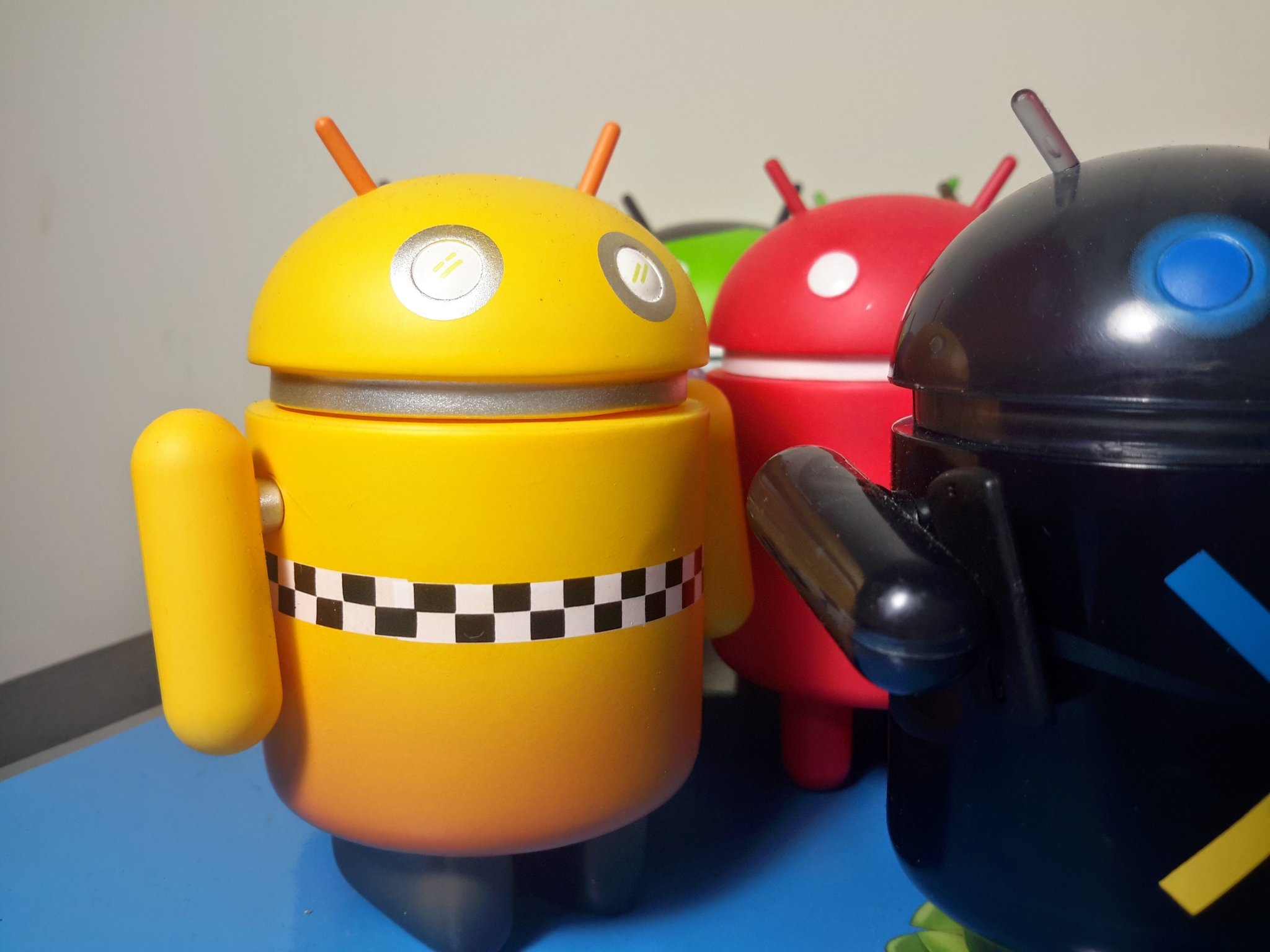How BlackBerry built Android but Apple perfected it
BlackBerry started the smartphone craze and Apple changed how we use them. Android has its roots in both and that's what makes it great.
It all starts back in 2002 when a company called Danger builds a device called the Hicktop — a.k.a. the T-Mobile Sidekick for everyone in the U.S. Yes, there were "data-driven" devices in Japan, and companies were making PDAs, but the smartphone craze can be traced directly back to the Sidekick.
Ironically, the Sidekick wasn't a smartphone and even back then nobody claimed it was anything other than a great way to send messages and have fun playing Rockets and Rocks even though it did feature a robust (by 2002) standards suite of productivity tools like an online calendar and a day planner. But people loved them, and two companies took notice: Microsoft, which bought Danger and went on to build the Kin as a failed direct successor, and BlackBerry who decided that the idea could be done better and people would love it even more.
A look at early BlackBerry devices helps it all make sense. You have a small display and a keyboard and the intent was to let people work while out of the office. Email, calendar, contacts and such were managed by a central server and no matter where you were, you had access as well as a way to reply to anything important. But someone within the company knew they could make those devices even smarter.
All great ideas in tech are a mash-up of smaller, equally great ideas.
That's exactly what BlackBerry (then officially called Research in Motion) did. Microsoft, Nokia, and others also did the same but nothing took off the way "the Crackberry" did, and BlackBerry rode the idea to a huge global success that the company somehow floundered away in the years since.
As it turns out, Danger's former CEO Andy Rubin was paying attention, too. While never a hardware genius and a very flawed man, he is a master at putting new ideas and his own visions into software. He was working on an advanced operating system for digital cameras back in 2004 named Android. After pitching the idea around and failing to have much luck, he decided he could better market Android for phones and got to work. Google acquired the company in 2005, released the T-Mobile G1/HTC Dream in 2008 and by now you know the rest.
But there were two key decisions that fundamentally changed Android before it ever was shown to the public. The first was a decision to move Android away from being a BlackBerry clone and into something with "tremendous potential in developing smarter mobile devices that are more aware of its owner's location and preferences" which aligned quite nicely with Google's future as a search and advertising company. People would have loved a cheaper BlackBerry style device as long as it had the same tools and a built-in messenger client. And BrickBreaker, of course. But with Rubin and his wild dreams in charge of development, Android started to take shape with a bit more smarts hidden deep inside the OS.
Had Nokia or Palm been able to find the same success as Android, this website would have a very different name.
Microsoft, Nokia, and even BlackBerry itself were also trying to smarten things up and a look at what Palm was doing showed that people wanted more than just messaging. It seems that every company that was making phones was adding in features, both user-facing and inside the operating system to make devices easier to use and more fun to carry around.
Then along comes Apple and the first iPhone. It took the idea of a smartphone and added extras like a full web browser and access to YouTube along with an amazing all-glass design that ditched the QWERTY keyboard and replaced it with a 10-digit multi-touch on-display version. (Wow, that's a lot of hyphens in one sentence.) People went crazy over it. Not just Apple die-hards, but anyone with an interest in tech either had or wanted an iPhone.
Android had to switch lanes again and produce a device with a large full-color display and match the iPhone's software features. The G1 kept the keyboard, but Google made sure you could use it without ever opening it up.
Love it or hate it, the iPhone changed everything.
BlackBerry was no longer relevant to the smartphone craze, but Apple was. The first iPhone sucked. It was slow, prone to lag or even crash, and being locked to AT&T meant that you never had a good data signal and your calls sounded horrible. But the innovation that came along with it meant that companies like Microsoft, Nokia, and Google had to step things up.
For a long time, Android was behind on the feature front when it came to a comparison with the iPhone. But with each release, we saw those tiny improvements — some to catch up with Apple, like multi-touch, and others to surpass Apple like the Android Market — but Google and Apple were feeding off of each other and it was great. Two or three new platform updates each year happened, each with major improvements to the user experience and as sales began to climb more attention to detail went into every release. If the iPhone had never happened, I'm betting things would have been very different.
Android and Apple are still shamelessly copying each other and I hope that never changes.
Get More Pixel 3a
Google Pixel 3a
Pixel 3a From $399 at Amazon Pixel 3a XL From $479 at Amazon
from Android Central - Android Forums, News, Reviews, Help and Android Wallpapers https://ift.tt/2BbMZQ5
via IFTTT



ليست هناك تعليقات: